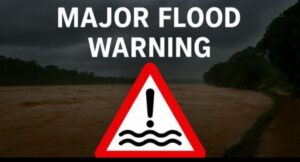
At least four people have died after two boats carrying nearly 100 migrants capsized off the coast of Libya on Saturday, according to rescue workers. The Libyan Red Crescent confirmed that the deceased were passengers on a boat carrying 26 Bangladeshi nationals. The fate of those on a second boat, which was carrying around 70 mostly Sudanese individuals, remains uncertain.
The tragic incident occurred along the central Mediterranean route, a perilous passage between North Africa and Italy. The UN International Organization for Migration (IOM) has labeled this route as the “deadliest known migration route in the world.” The boats had departed from Al Khums, a port city in northwestern Libya, before meeting their tragic fate.
The Dangerous Journey Across the Mediterranean
The central Mediterranean route has been a focal point of migrant crossings, with hundreds losing their lives each year in overcrowded and unsafe vessels. The Libyan Red Crescent shared harrowing images of their crew providing aid to survivors amidst the grim sight of black body bags on the ground.
According to the IOM, more than 1,500 people have died or gone missing in the Mediterranean in 2025 alone. A significant portion of these tragedies, about a third, have occurred off the coast of Libya. The North African nation serves as a primary departure point for migrants attempting to reach southern Europe, with nearly 59,000 arrivals this year via the central Mediterranean route, as reported by Frontex, the European Union’s border security agency.
Recurring Tragedies and International Response
This latest incident follows a similar tragedy earlier in the week, where dozens of migrants who embarked on a small boat in Libya were missing and presumed dead after capsizing in the Mediterranean. Seven survivors from Sudan, Somalia, Cameroon, and Nigeria were rescued after being adrift at sea for nearly a week.
These recurring tragedies underscore the urgent need for international cooperation to address the root causes of migration and improve search and rescue operations in the Mediterranean. Experts argue that political instability, economic hardship, and conflict in countries of origin drive people to undertake these dangerous journeys.
Expert Opinions and Historical Context
Migration experts emphasize the complexity of the situation. “The Mediterranean has become a graveyard for many seeking a better life,” said Dr. Maria Gonzalez, a migration policy analyst. “Without addressing the underlying issues in countries of origin, these tragedies will continue.”
Historically, the Mediterranean has been a critical migration route, with its challenges exacerbated by recent geopolitical developments. The collapse of the Libyan state, ongoing conflicts in the Middle East, and economic disparities in Africa have all contributed to the increase in migrant flows.
By the Numbers: “More than 1,500 people have died or gone missing in the Mediterranean in 2025 so far.” – IOM
Implications and Future Steps
The latest tragedies highlight the urgent need for a coordinated international response. European nations, along with North African countries, must work together to enhance maritime safety, provide humanitarian assistance, and develop sustainable solutions to migration pressures.
As the world grapples with these challenges, the stories of those who risk everything for a chance at a better life continue to resonate. The international community faces a moral imperative to address these issues, ensuring that the Mediterranean does not remain a symbol of human suffering.
Efforts to improve conditions in migrants’ home countries, alongside robust search and rescue operations, could prevent further loss of life. The international community must act decisively to turn the tide on this humanitarian crisis.





